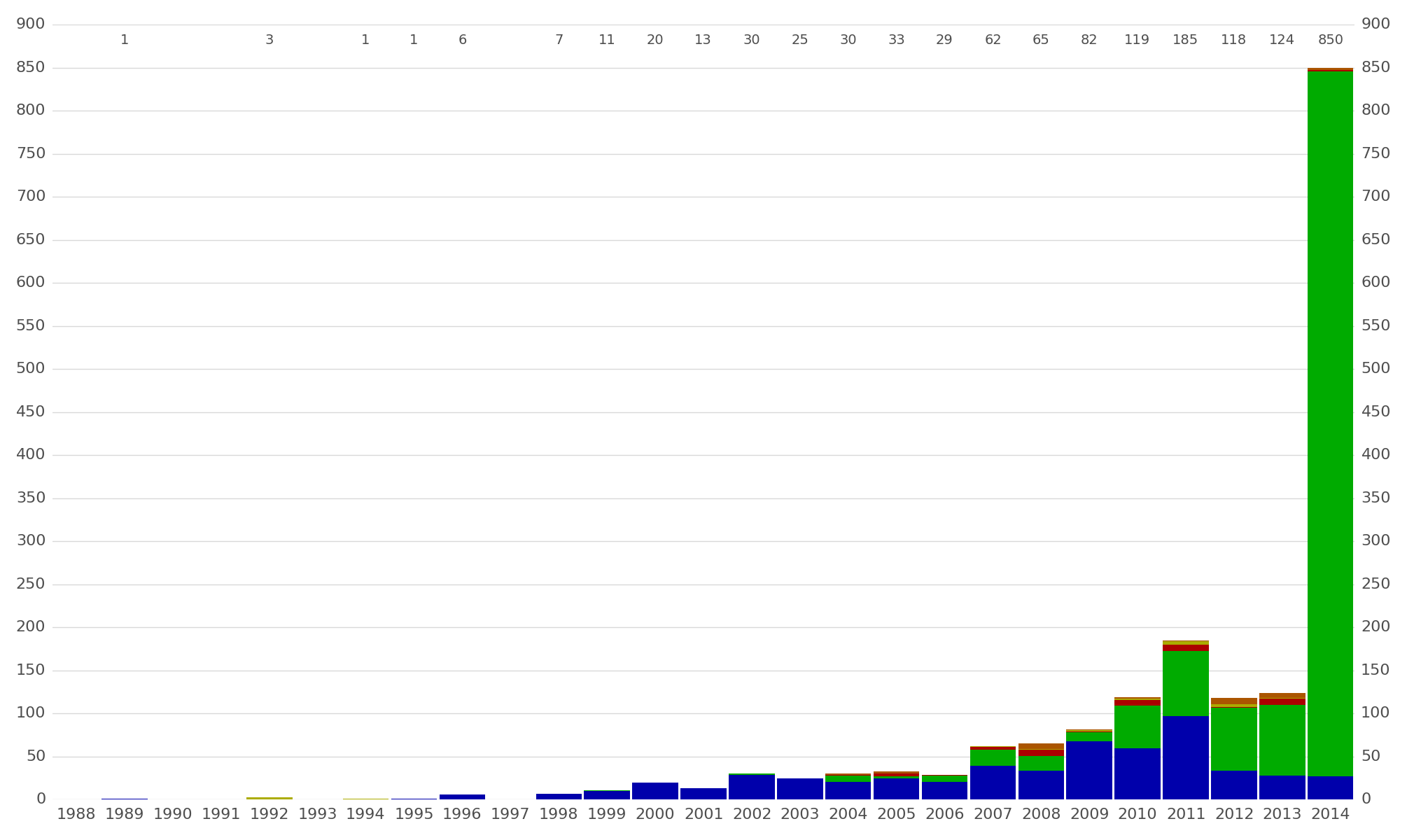Using Waves to find Exoplanets
Exoplanets are planets outside our own solar system. A planet is defined by orbiting its star, and not crossing the orbit of other planets.
There are many waves of finding exoplanets, for example;
- Gravitational Lensing
- Radial Velocity
- Transit
- Direct Imaging
- Timing
This write-up will be focusing on Radial Velocity, as that is the one most involving waves.
|
radial velocity
transit
timing
|
direct imaging
microlensing
|
Contents
Radial Velocity
------------------------------
Radial Velocity is the exoplanet's orbital velocity around the star. We use the color of the star as a marker, as it has certain color.
Steps for finding exoplanets
- Observe color of star over a long period.
- If color of star varies, without brightness changing, measure wavelength difference over time.
- If brightness varies, you found a double star.
- Wavelength difference will allow you to find the speed of the planet around the star, and thus its orbit.
Mathematics
Using the Doppler shift formula, λ0/λ=v/c
Where:
λ0 is initial wavelength
λ is wavelength
v is relative velocity of object
c is the speed of light (299 792 458 m/s)
Velocity will be the relative velocity to the viewer. As most planets are much closer to their planet than the star system is to earth, We can assume that the angle between the line connecting two opposing ends of the orbit and the viewer is taken to be 90º.
This motion as observed from earth follows Simple Harmonic Motion, however, as the star's light is usually much brighter and extincts the light from the planet, we observe the brightness difference of the star. The varying magnitude of the star would allow us to detect when the planet is transiting across the star surface when viewed from earth or just a rocky body.
Examples
------------------------------
Gliese 581 c, is an exoplanet detected by Radial Velocity, on April 4th 2007. It is of particular intrest to astronomers as Gliese 581 c lives in the parent star's habitable zone, which is the distance from the star in which liquid water can exist on its surface. Gilese 581 c has a mass of 5.5 times of earth, and orbits its parent star at 11 million km (7% of earth's orbital radius, 149597870.6 km).
Kepler 16(AB)b, is a very special exoplanet, as this exoplanet orbits 2 stars, instead of one. This is the first exoplanet to be discovered orbiting a binary planet.

The Future of Exoplanet detection
The future of exoplanet detection looks very promising, and is pushed by the boom of technology. Out of all the exoplanet detection methods, Radial Velocity looks the most developed and advanced of them all. This is because optics design has been becoming better and better to detect spectral lines.
The current spectrography equipment has a resolution of 0.3m/s, while the next generation technologies will refine it down to 0.1m/s. This will allow the detection of down to earth sized exoplanets.
The future is looking bright for exoplanets indeed!
References
Graph
Quick reference
Astro club work, 2012-2015
Own readings
